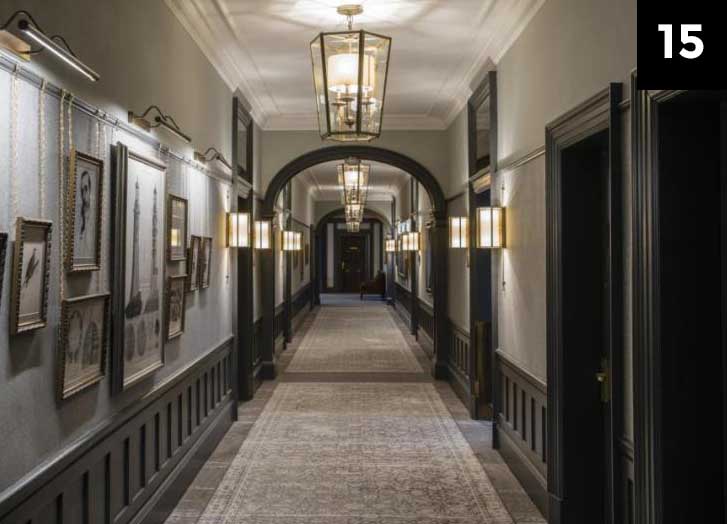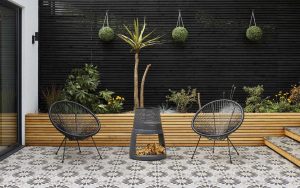GTHD
A GUIDE TO HOTEL DESIGN PT 15:
CORRIDOR DESIGN
Whilst the bedroom and a good night’s sleep are the main attributes of what the guest wants from a stay in an hotel, the impression created by the corridor can also be key to the guest experience. The journey to the room should not just be as enjoyable as walking down a corridor can be made, but should also be easy in terms of the guest finding a room and should enable the guest, en route, to see everything the hotel has to offer.

Credit: Gleneagles
After all, the hotel wants the guest in the bar/spa/restaurants spending money, not in solitary isolation in their room.
Walking long corridors with endless vistas into the distance, unbroken by any form of variation for the eye, is boring. There are a number of ways that the designer can alleviate this through the planning, furnishing and lighting.
If possible, the building layout should consider the guest from the start. The design should ensure that lifts are centrally placed with corridors kept short. If corridors are long, then consideration should be given to insetting doors so that the eye is not presented with a long tunnel. The eye line can be broken by alcoves, which should also help locate where room doors are.
There are a number of additional tricks that the designer can use which emphasise location. Whilst graphics or floor numbers can be used, often a visual clue can be placed outside the lift as an alternative. As the lift doors opens the guest can recognise where they are through colour, or a unique arrangement of furniture, perhaps a piece of art, that is unique to that floor and enables visual recognition of arrival. Lighting can spotlight the doors, perhaps incorporated into the door numbering, indicating door locations easily and visually.
Lighting positions can be at irregular intervals down the corridor. Lessen the predictability and it will relax the guest by providing visual interest. Emergency/maintained lights also need to be designed to fit seamlessly with the interior scheme, and escape route lighting also needs to be chosen to be both visually effective but also to harmonise with the interior.
Incidentally, corridors are where the largest energy saving can be made – the lighting can be controlled through motion sensors to ensure lights are only on when people are present. Corridors are often heated to the same level as rooms whereas most guests dress before walking down them so they can be heated to a much lower level.





